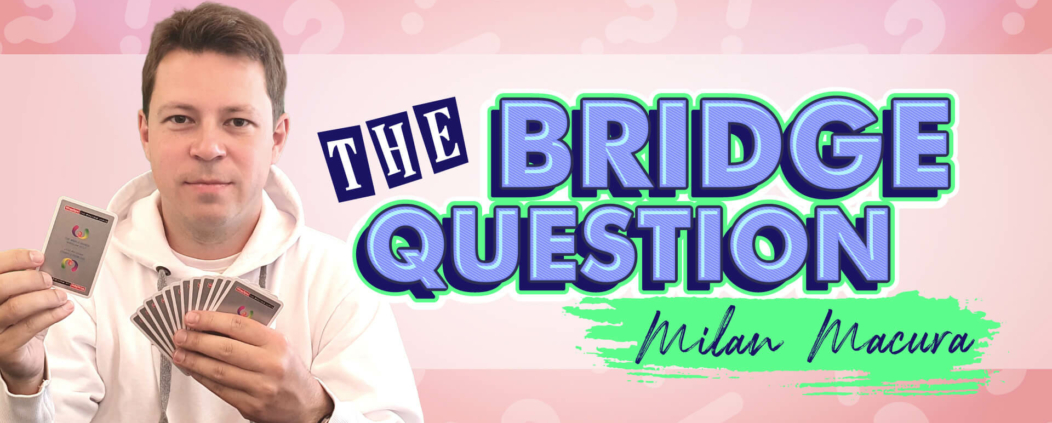
What would be your next bid?
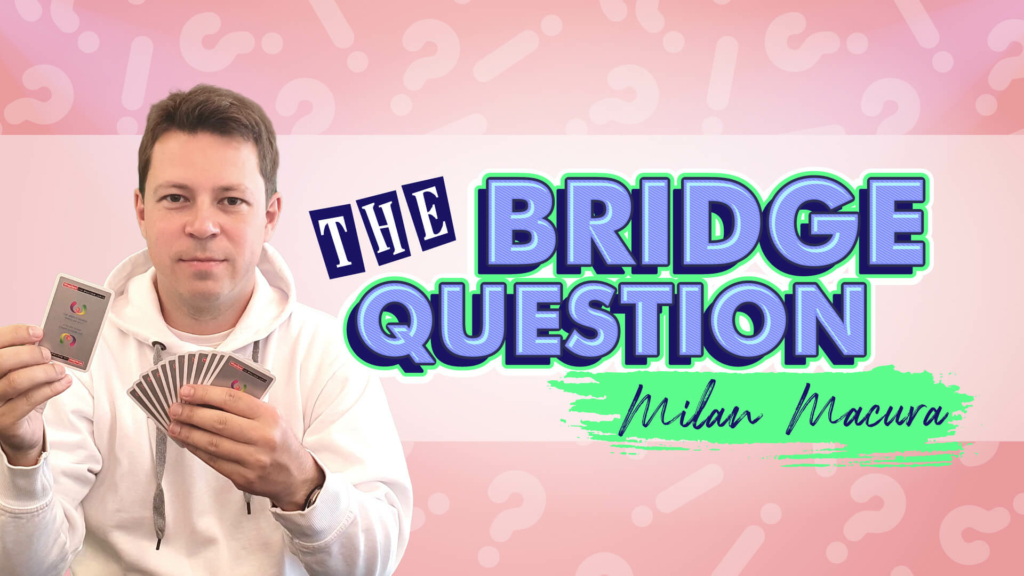
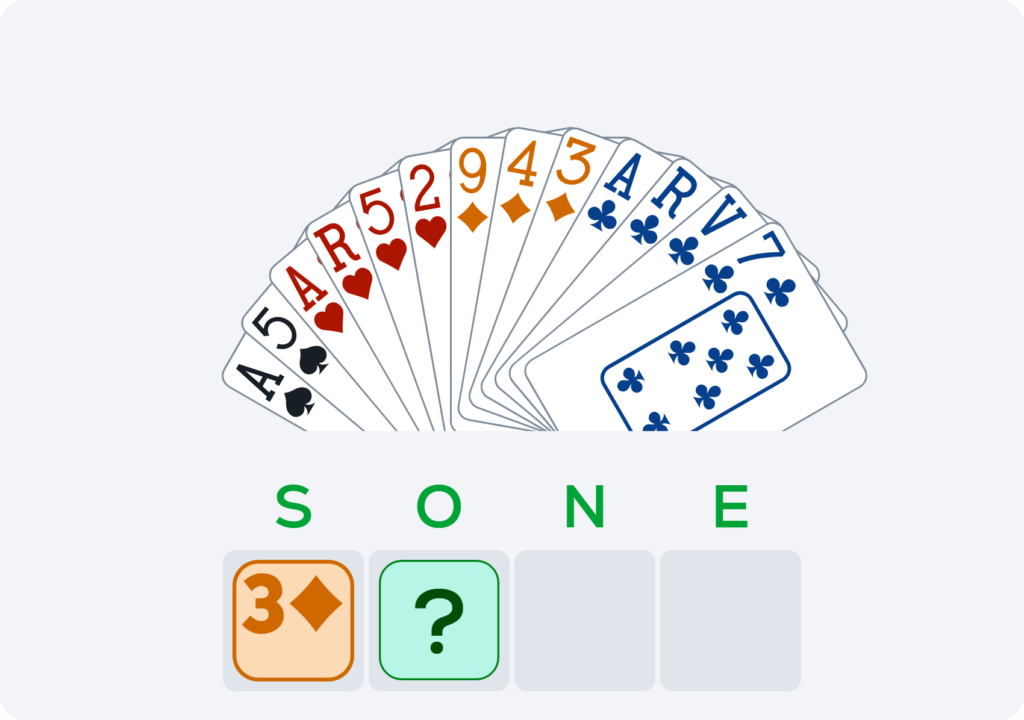
What do you bid with this hand?
And what do you plan to do next if your partner makes the most expected bid?
The solution by Milan Macura
You have 19 HCP and 5 sure honour tricks. You must take an action. Yet, you have neither 3-card spades for a take-out double nor a 5-card suit, nor a stopper to bid 3NT.

You have to choose the bid that can get you to most probable contracts that can be profitable for your side. With this hand, my choice would be to double and use the following tip on how to react after a take-out double at the 3-level.
3 in a minor is a great pre-empt because we still have both major suits where to look for a fit and 3NT can secure the game bonus as well. The opponents took a lot of space, so we have to combine many strength ranges in both hands.
Milan’s tip: “Responder bids as if Partner opened 1NT as 15-17”.
Therefore, if you invited to game opposite a 1NT opening, you must bid game. If you are weaker, you respond your longest suit in order, usually 3♥/♠. You can pass with no better bid and two possible tricks, preferably one in the trump suit.
If Responder bids 3♥/♠, you pass if you have the equivalent of a 1NT opening or you take one more action if you are stronger. Put slam ambitions aside and focus on all bids below 4NT (and the other minor) to find the best game.
Definition of direct overcalls after a 3♦ pre-emptive opening:
- Double = solid opening hand without a 5-card major or hand that you would open with strong 2♣ (~4 losers) or GF hand opposite Partner’s 1-level response (17-20 HCP)
- 3♥/♠ = 5+ cards with ~6 losers
- 3NT = 16-22 HCP or equivalent with a stopper in Clubs
- 4♣ = 2-suited hand – 55, 64 and better – with less than 5 losers
- 4♦ = both majors, usually 55, and less than 5 losers
- 4♥/♠ = 6+ cards with ~5 losers
- 4NT = ace-asking with your own suit, ~3 losers
- 5 in the other minor = ~5 losers with shortness in the opponents’ suit
- 5 in the opponents’ suit = ~3 losers and shortness in the opponents’ suit
If you initially doubled, what do you do after Partner’s 3♠ bid?
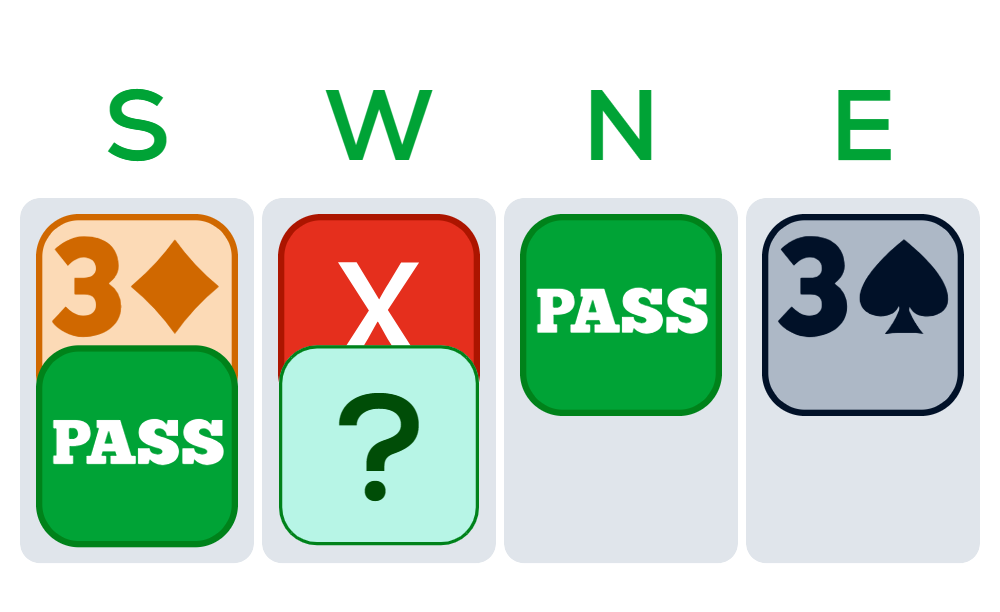
Your hand is stronger than a 1NT opening, so you should take another action here. Yet, you face the same issues as before. If you focus on bidding games and give up looking for a slam with bids below 4NT, you can use 4♦ to show that you have no better bid and tell your partner that he is the one to choose the final contract. If you have an agreement that the opponents’ suit is a slam invite with a fit, you have to find another way of searching for the best game.
The answer you are looking for is the other minor. You use it often at low levels as a help bid and you can do the same at higher levels. Yet, you must have agreed on how you treat the minor hands. You still have these options in your bidding box: pass, 3NT, 4m (with a major), 5m, double followed by 3NT/5m.
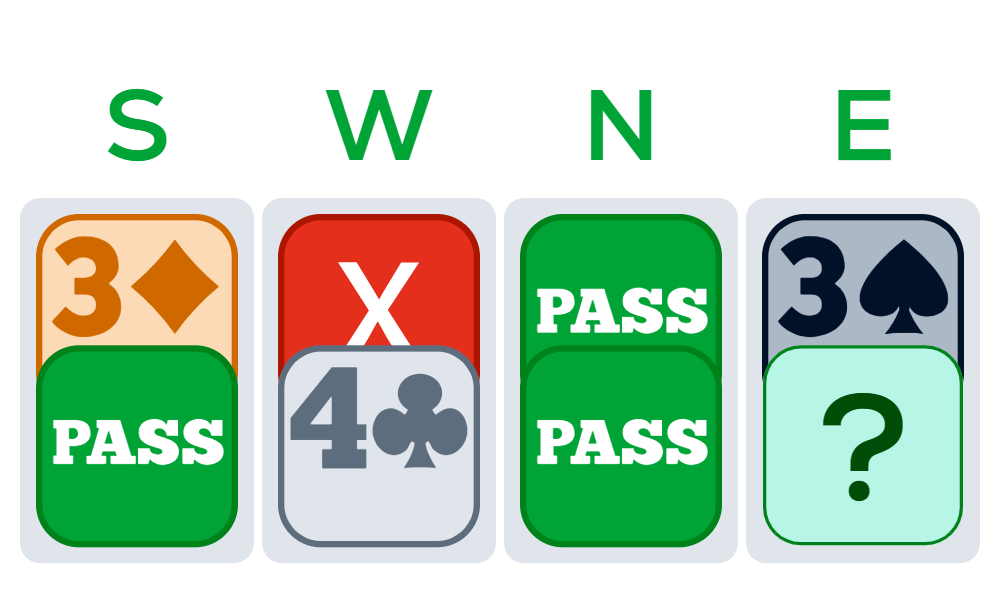
If you choose the 4♣ bid, Partner has these options:
- 4♦ = I also don’t have a clear idea of what to do
- 4♥ = 5♠, 4♥
- 4♠ = 5+♠
- 4NT = a stopper and a maximum hand
- 5♣ = a club fit and only 4♠ (often diamond shortness and 5♣)
What did you think about this article?
Share your opinion in the Commentaries Section!




Some hands should be canceled due to unbidability 🙂
I chose to double. But not sure how I would have responded with the answer.
I would double and bid 4D. Strong hand but no suitable bid. Then we play game in whatever suit partner bids. 5-2 spade fit if necessary.
Tough hand and good article for partnership agreement after minor preempt
Me too I double and your following explanation is so clear. Thanks for that.
I was thinking 3NT to show higher points and balanced hand but of course nervous bidding game without knowing anything about partner’s hand. Thanks for your advice and explanation.
I have no idea how many points I have in my hand because I don’t know what R and V mean!
Pass är rätt bud
3 no trump
5 diamonds
3 NT.
Good
I think you should always stick to English, i.e A,K,Q,J, when naming the cards. Most people know the meaning, but gets confused if you use French.
Yes to using English!
Thank You for the question ,I did pick Double but after that I was wondering ,I thought 4 hearts but that limits the number of subsequent bids. I wish I could have time to talk with my potential partners. No that organized. Thanks for having Fun Bridge